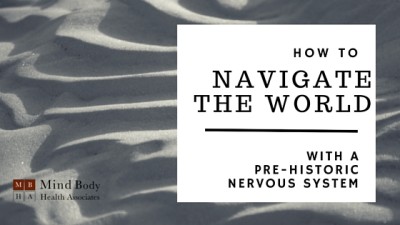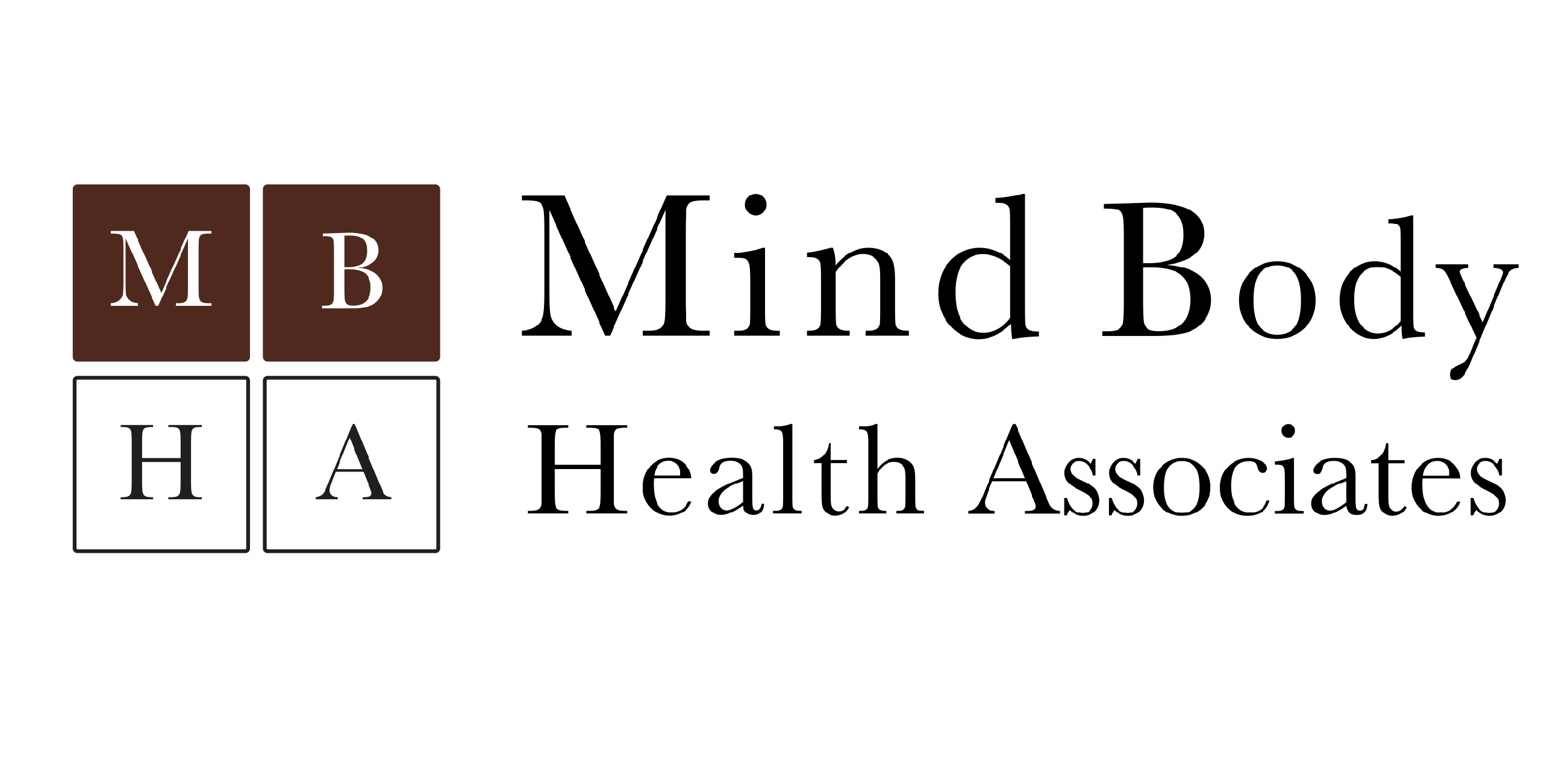How to Navigate the Modern World with a Prehistoric Nervous System
By Holly Schweitzer Dunn, LISW
 Living in this modern world is stressful. At any given moment we are bombarded with abundant stimuli: the ding of an email in your inbox, the buzz of a text message, the croak of a reminder on your calendar, the stove alarm reminding you your child’s screen time is over and dinner is ready, a barking pet that needs to go outside, ambulance sirens, flashing police lights, a blinking crosswalk signal, the radio or tv in the background, traffic merging towards you, groceries to remember, bank deposits to make, bills to pay. Need I go on?
Living in this modern world is stressful. At any given moment we are bombarded with abundant stimuli: the ding of an email in your inbox, the buzz of a text message, the croak of a reminder on your calendar, the stove alarm reminding you your child’s screen time is over and dinner is ready, a barking pet that needs to go outside, ambulance sirens, flashing police lights, a blinking crosswalk signal, the radio or tv in the background, traffic merging towards you, groceries to remember, bank deposits to make, bills to pay. Need I go on?
I am not describing the complexities of an uber-parent, but the normal daily experiences of most people living in the United States. Is it any wonder the number of Americans prescribed anti-depressants has risen over 400% since 1988? (Source) Or that the rate of a particular type of anti-anxiety medication purchased in the United States increased 67% in 2013? (Source) We constantly expect ourselves to produce more, in less time, with less human interaction, and less sleep with a smile on our faces.
One of the reasons we struggle to find the peace for which we all strive is because our brains are not designed to manage the modern threats we face everyday. Our brains are wired to keep us safe from the wild animals and natural threats our ancestors faced thousands of years ago. Our nervous systems are created to keep us alive in the face of wild animals and raging rivers. Once they mustered the extra energy to fight off the attack, swim ourselves through the rapids, or run away from the danger they also had time to relish their safety and alive-ness. They hid, licked their wounds, allowed their bodies time to regroup, quiver out the adrenaline, and return back to the world with a renewed appreciation for life and safety.
We don’t have this today. Our modern existence does not allow us time to pause and appreciate our alive-ness. It is one thing after the other with real and perceived threats having no differentiation. Our amygdala is not able to tell the difference between a wolf attack and an inbox of 50 unanswered emails after a long weekend away from work. It responds as if either one could kill us.
And if we don’t change the way we respond to this modern world, either one certainly will.
Managing modern stressors requires us to tap into the inherent resources possess: the natural mood lifters and stress reducers our bodies hold. Sitting with the emotional sensations of stress, fear, desire to flee, and discomfort can initially bring more distress. Learning to “surf the urge” is key, and doing this requires trust in oneself and in the world around oneself. It also requires calming reminders that we will be okay- think of this in the way a parent talks to an upset baby. That need for reassurance and security never leaves us. We ultimately must learn to offer this to ourselves if we want to begin implementing an alternative response to stress.
Step 1. The belly breath. In through the nose, out through the mouth, inhale for a count of 4 or 6, exhale for 6 or 8. Blow belly out like a balloon on the inhale, and connect the belly button to the spine during the exhale. Choir directors call this diaphragmatic breathing.
Step 2. Validating the emotions. Remind yourself, It makes sense that I feel this way. There is a lot going on right now. I can handle this.
Step 3. Guaranteeing security and safety. Remember, I can handle this. I am okay. I am safe. I will start with one thing at a time. It will be okay.
Step 4. Allow the fear response to pass and secure response to set in. Notice the endorphins washing the body with calm, allow the adrenaline to quiver out of the body, close your eyes to block out visual stimuli and focus on the rhythm of the breath. Notice the rise and fall of the chest.
As Diane Musho Hamilton said in Everything is Workable: A Zen Approach to Conflict Resolution: “Each time we succeed in being mindful of our body in moments of distress, we develop our capacity. Even more, we may observe something new when it occurs. A moment of pause, an unexpected question when it appears or a laugh that erupts. When anything new happens, taking note of it helps to free us of the pattern to our old way of doing things. Before we know it, our old habit of fight or flight is changing, and the world is a safer place.”

